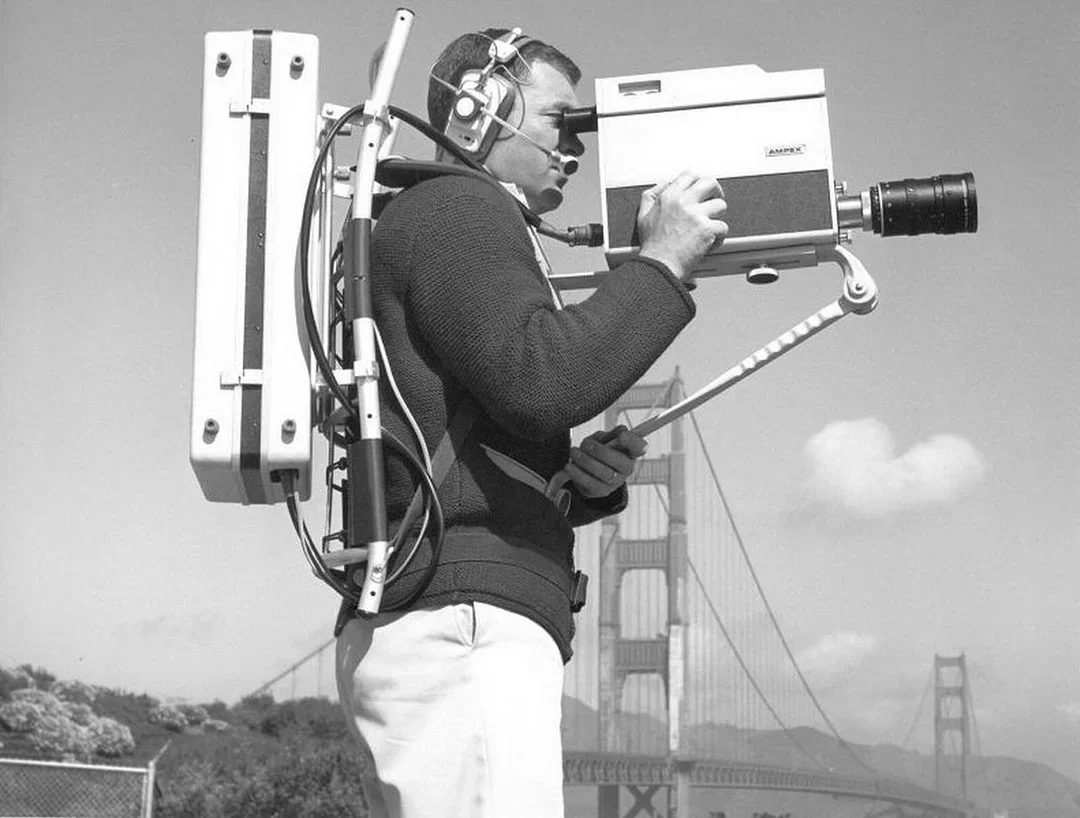Meet the 100-Pound Grandfather of Modern Video Production
Retro Tech by: Mike Meyerson
Every now and then you see a piece of vintage gear that just stops you in your tracks. For me, it's this retro machine. It looks like something out of a 1950’s sci-fi movie like (“Forbidden Planet” comes to mind). So I did a little digging, and the real story is even cooler. This is the Ampex VR-3000, and it’s one of the most important and wildly impractical pieces of video gear that you’ll ever see, and it was instrumental in getting video production out of the studio.
This thing isn’t just a camera, it’s a "portable" videotape recorder (VTR) from 1967. And I use the term "portable" very loosely.
Just How "Portable" Are We Talking?
In the 1960s, "portable" usually meant a two-man job. One person operated a heavy broadcast camera (like a Norelco PCP-70, often paired with a beautiful, iconic Angenieux zoom lens) tethered by a thick cable. The other person, the VTR operator, hauled the recording rig.
This was no easy task. The rig consisted of a 58-pound recorder in a briefcase, plus a 30-pound battery pack worn on the back. With the heavy 2-inch tape reels and cables, the total operational weight was often over 100 pounds. This wasn't just a job; it was a workout.
The system recorded onto massive reels of 2-inch Quadruplex videotape, the broadcast standard. With a tape speed of 15 inches per second, a single reel held only 20 minutes of footage, crews were forced to be efficient.
On the Field at the Olympics
So, who on earth would use this thing? The biggest television networks on the planet, actually. The VR-3000 had its most famous trial-by-fire at the 1968 Winter and Summer Olympics, where ABC Sports used them to get right on the field. For the first time, viewers were right there in the action. It was the birth of modern sports broadcasting as we know it.
This machine was the trailblazer. It proved that high-quality, electronic on-location production was possible. It got video production out of the studio. It was the machine that put the "E" in ENG (Electronic News Gathering). It was a workhorse...but as it is with all gear (especially in the video world), its days were numbered.
The Revolution That Replaced the Beast
The VR-3000's reign was powerful but brief. In the early 1970s, Sony introduced it’s very popular U-Matic system, and the entire industry changed almost overnight.
This is a classic tech disruption story. The new U-Matic portable decks, like the Sony VO-3800, had two massive advantages:
The Cassette: The 2-inch open reels were gone. They were replaced by a self-contained 3/4-inch cassette. No more threading tape. You just popped in a tape and pressed record.
The Weight: The new portable deck weighed around 30 pounds, not 100. One person could now realistically carry both the recorder and the camera.
Oddly enough, the video quality of U-Matic was actually worse than the Ampex 2-inch tape. But it didn't matter. The convenience, portability, and of course, the lower cost were so revolutionary that the entire broadcast world switched almost immediately. Local news stations could finally afford ENG gear, and the era of the 100-pound two-man VTR crew was over very quickly. The 3/4-inch U-Matic on the other hand was used in the industry until the 1990’s when it was replaced by the superior Betacam SP. Sony didn’t end technical support for the it’s U-Matic line until 2016, proving it’s value as a true workhorse format.
The Legacy
Today, the Ampex VR-3000 is a prized museum piece, with beautiful examples on display in places like the Museum of Broadcast Technology in Rhode Island. I would love to get my hands on one and take it for a spin. It stands as a monument to a time when capturing video on the go wasn't just an art, but a true feat of engineering and human endurance. It was the machine that proved it could be done, paving the way for the U-Matic revolution that truly made modern news and the on-the-go video production industry, a reality.
Author Bio:
Mike Meyerson is the founder of FEELING CREATIVE?, and has worked in the video/film/advertising industries for over 25 years. He also enjoys photography and has dabbled in screenwriting (horror-specific). Currently located in NY’s Hudson Valley Region and always looking to build the network.


